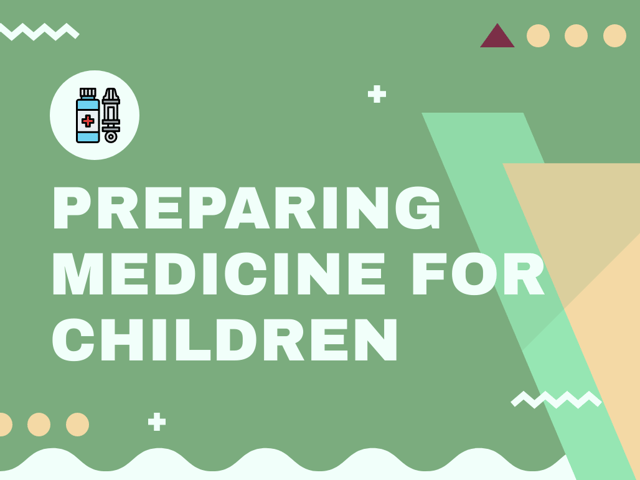
Preparing Medicine for Children
Proper medication administration is essential for a therapeutic benefit in any patient population, including children. With any medication, it is important that the right patient receives (or takes) the right medication at the right dose, right route of administration, and right frequency. These five “rights” are applicable both in the inpatient setting (hospitals, clinics, etc.), as well as the outpatient setting (individuals self-administering their medications at home).
Proper Dosage
Parents must follow a medication’s directions closely to ensure proper medication administration to their child. With regard to the adolescent and infant population, a medication’s dose is typically calculated by the doctor and checked by the pharmacist, based on the child’s weight. This means that accidentally administering less or more than the prescribed dose can lead to ineffective underdosing or toxic overdosing.
No Kitchen Spoons
There are a few different ways a medication can be measured accurately and consistently for your child. Many medications are formulated as a liquid or suspension, specifically for children or others with trouble swallowing. These should never be measured with a standard teaspoon or tablespoon you would find in your kitchen.
Accurate Measurement
It is important to ensure a calibrated dosing cup or spoon is used for relatively large volumes. The best way to measure liquid formulations is by the use of an oral syringe for relatively smaller volumes. Dosing cups, dosing spoons, and oral syringes measure in milliliters (mLs). Oral syringes come in a variety of sizes (1mL, 3mL, 5mL, 10mL, 20 mL) and should be available at your local pharmacy. When picking up a liquid prescription for your child, be sure to ask the pharmacy personnel for a measuring device if one is not enclosed with the medication already.
Measuring Units
An important rule of thumb for parents to remember is that one teaspoon is equivalent to 5mLs while one tablespoon is equivalent to 15mLs. The directions of a liquid prescription may list the dose in either mLs, tablespoon(s), or teaspoon(s). Knowing this simple conversion will save you from having to call the pharmacy or prescriber for clarification.
Medicine Storage
The pharmacist at your local pharmacy is the best resource for drug information and proper medication administration techniques. Some antibiotic suspensions used for children need to be refrigerated while others do not. The pharmacist should instruct you with specific storage requirements upon prescription pickup.
Special Considerations
Some children may be fussy and not want to take a medication if it has an unpleasant odor or taste. Many tablets can be split or crushed and many capsules can be opened and sprinkled on lukewarm food, like applesauce or pudding to mask the taste. It is important to consult with your pharmacist first as some medications cannot be split, crushed, or opened due to their formulation.
A liquid medication’s taste can also be masked by the addition of flavoring and/or anti-bittering agent. Many retail pharmacies are equipped with a flavoring station that has flavor recipes for most liquid medications. All you have to do is consult with the pharmacist and they should be able to provide you with a variety of flavors to choose from to add to the prescription.
Although giving your kiddo a medication can sometimes be difficult, it is important to ensure correct administration and storage techniques are followed. This will help the medication do its work so your child can feel better. Following the tips and tricks listed above will help you as a parent because nobody likes it when their child is not feeling well. Something as simple as a dosing device, flavoring agent, or consultation with your pharmacist can put you and your sick child at ease.

Keep Reading

PTCB Pharmacy Technician Certification Exam Blog
Memorable Mnemonics: Master Drug Knowledge for the PTCB Exam
Studying for the Pharmacy Technician Certification Board (PTCB) exam is…

PTCB Pharmacy Technician Certification Exam Blog
The Top 200 Drugs on the PTCB
The Pharmacy Technician Certification Board (PTCB) exam is the final st…

PTCB Pharmacy Technician Certification Exam Blog
Is the PTCB Exam Hard?
Is the PTCB Exam Hard? Did you know that in 2021, over 430,000 pharmac…